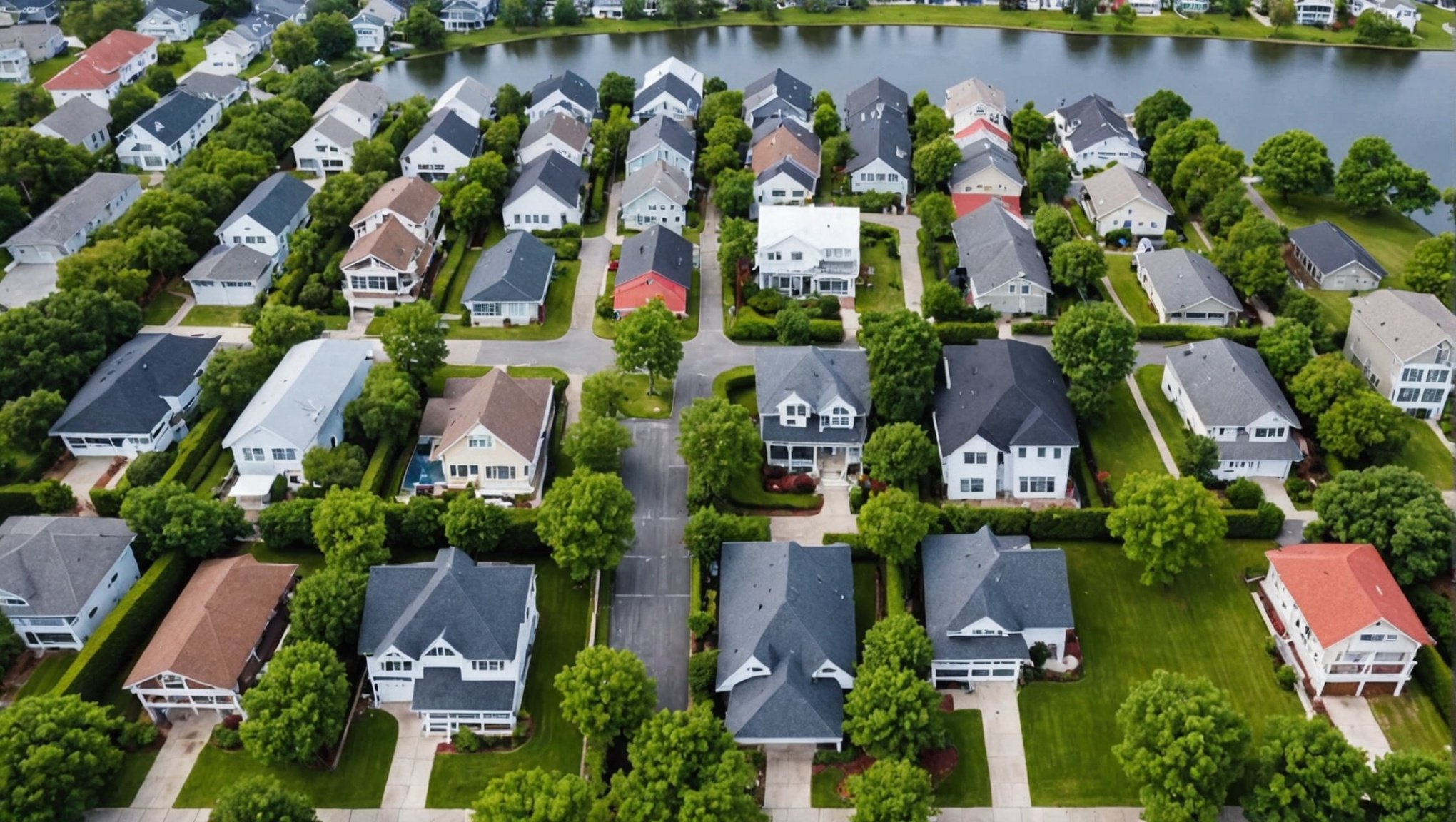Understanding the Risks of Disaster-Prone Areas
In the realm of real estate, understanding the risks associated with disaster-prone areas is crucial. Properties in these regions face potential threats from natural disasters such as earthquakes, floods, hurricanes, and wildfires. Each of these events can lead to significant damage or even total loss, affecting property value and safety.
To navigate these risks, it’s essential to conduct a thorough disaster risk assessment. This involves evaluating the likelihood and potential impact of various natural hazards in a specific area. Tools for such assessments often include historical data analysis and geographic information system (GIS) mapping, which can identify trends and patterns in natural events.
Also read : Mastering Real Estate Investment: Strategies for Navigating Risks in Unpredictable Markets
Equally important is conducting a vulnerability analysis. This process examines how susceptible a particular property or region is to these threats, considering factors such as building materials, elevation, and surrounding infrastructure. Understanding your property’s vulnerabilities enables you to implement mitigation strategies, reducing the impact of potential disasters.
Ultimately, knowing the property hazards specific to your locale can help in making informed decisions. Whether investing in flood barriers, retrofitting buildings for earthquake resistance, or reinforcing against wind damage, proactive measures can minimize risks and protect property value.
Also to see : Unlocking Real-Time Property Valuations: Harnessing the Power of Artificial Intelligence
Insurance Options for Real Estate Investments
When investing in real estate, especially in disaster-prone areas, understanding your property insurance options is crucial. Different types of insurance policies cater to various risks, including but not limited to flood, earthquake, and fire. It’s important to evaluate potential hazards in the area before selecting a policy to ensure comprehensive protection.
Disaster coverage varies between providers and often requires a specific plan for high-risk areas. For instance, standard policies may not cover natural disasters like floods or earthquakes, necessitating additional insurance. Evaluating the coverage limits and deductibles of these plans is essential. The right policy should balance cost with sufficient safety net, covering repairs or rebuilding with minimal out-of-pocket expense.
Risk management plays a critical role in safeguarding your property investment. This involves understanding all possible threats and proactively engaging with insurance solutions that mitigate financial exposure. For example, choosing policies with higher deductibles can sometimes lower premiums overall, offering a strategic trade-off between risk and cost.
Case studies often illustrate successful disaster insurance claims where proactive measures led to timely reimbursement and swift recovery. Carefully chosen property insurance reflects a sound investment strategy, securing assets from unforeseen events, maintaining investment viability, and ensuring peace of mind.
Property Modifications for Enhanced Resilience
In areas prone to natural disasters, effective building codes are crucial for minimizing damage. For instance, in flood zones, elevating structures and using water-resistant materials can significantly enhance a property’s resilience. These modifications not only protect assets but also improve safety for inhabitants.
Retrofitting involves upgrading existing structures to withstand disasters, such as earthquakes or hurricanes. For earthquakes, techniques like reinforcing walls and bolting buildings to their foundations are pivotal. Meanwhile, for hurricane-prone areas, installing impact-resistant windows and reinforced doors can provide crucial protection. It’s about making structures sturdier, so they endure and function during extreme events.
Disaster-resistant features also include the use of innovative materials and designs. For example, cross-laminated timber (CLT) offers durability and flexibility, making it an excellent choice for both retrofitting and new constructions. Additionally, designs incorporating aerodynamic shapes reduce wind pressure on buildings during storms.
By adhering to proven building codes and implementing retrofitting techniques with disaster-resistant materials, property owners can enhance their buildings’ resilience effectively. This proactive approach ensures that homes and buildings are not only compliant but also resilient against nature’s unpredictability.
Diversifying Real Estate Investments
Diversifying your real estate investment strategies is crucial for minimising risk exposure. By spreading investments across different regions and property types, you can protect your portfolio from unforeseen events and economic downturns. This strategy mitigates risk by reducing the impact that a disaster in a single location can have on your entire investment.
When considering portfolio diversification, it’s wise to look beyond local markets. Investing in less disaster-prone regions can offer stability, especially in areas less susceptible to natural calamities such as floods or earthquakes. This approach not only guards against geographical risks but also enables you to take advantage of emerging markets and varied economic cycles.
Real-world examples of successful diversified real estate portfolios demonstrate the effectiveness of these strategies. Investors who allocated assets in multiple locations—such as a mix of commercial properties in growing urban centres and residential units in stable suburban areas—often experience greater financial resilience. These case studies highlight how thoughtful diversification allows investors to maintain steady returns, even during challenging times, by strategically managing and anticipating potential risks.
Emergency Preparedness Planning
In the context of disaster preparedness, developing a comprehensive emergency plan is crucial for property owners. A well-structured plan ensures that all aspects of an emergency, from immediate response to long-term recovery, are effectively addressed. Key elements include detailed evacuation plans, which outline clear, safe routes and designated assembly points to facilitate a swift evacuation process.
Effective communication strategies are vital for coordinating efforts among tenants and stakeholders during an emergency. Establishing channels such as group messaging systems or dedicated hotlines ensures timely dissemination of critical information and updates. Regularly updating contact lists and practicing communication drills enhance preparedness and mitigate confusion during actual events.
To ensure the efficacy of emergency plans, providing resources for training and drills is essential. Conducting regular drills allows individuals to familiarise themselves with procedures, reducing panic and enhancing confidence in a real emergency. Resources such as online courses, workshops, and printed manuals can strengthen understanding and engagement with emergency response measures.
By prioritising these aspects — comprehensive planning, effective communication, and regular training — property owners can significantly improve readiness and reduce risks associated with emergencies.
Legal Considerations in Disaster-Prone Regions
Navigating the complexities of real estate law in disaster-prone areas involves understanding liabilities and zoning regulations. Property owners must be aware of their legal liabilities when it comes to damage caused by natural disasters. Liability can encompass various aspects, from structural damage impacting neighbours to being held responsible for failure in maintaining safety standards. Recognising these liabilities is crucial in preventing unforeseen legal challenges.
Zoning regulations also play a significant role in property investment. These laws dictate how land can be used, affecting the type, size, and location of buildings. In regions susceptible to disasters, zoning may restrict certain types of development to mitigate potential hazards. Ensuring compliance with these regulations is essential to avoid legal pitfalls and maximise property investment potential.
Following a disaster, legal challenges can emerge, from insurance claims to disputes over reconstruction. Here are some tips:
- Consulting with a legal expert can provide clarity on complex issues.
- Understanding local laws and how they apply post-disaster is vital.
- Documenting property conditions before and after a disaster can support claims and legal proceedings.
These steps can help navigate the tumultuous aftermath of disasters within legal frameworks.
Real-Life Examples of Resilience in Action
In the aftermath of natural disasters, case studies reveal how some communities triumphantly rebuild against the odds. Successful real estate strategies often emerge from the lessons learned in these challenging times. Consider New Orleans after Hurricane Katrina: best practices in property redevelopment and urban planning played pivotal roles in its recovery. They adopted innovative building codes and flood management systems that ensure heightened safety and sustainability.
Communities like Galveston, Texas, have shown resilience by integrating rigorous resilience planning into their reconstruction efforts post-hurricane. These success stories serve as a beacon for others facing similar challenges. Experts champion approaches prioritising resilience, from utilising eco-friendly materials to establishing green infrastructures. These steps not only aid in immediate recovery but also in long-term resilience planning.
Industry experts stress the importance of collaborative efforts. Local governments, property owners, and developers need to work together. Such collaborations have led to more robust and adaptable housing solutions. These insights aren’t merely theoretical; they’re drawn from real-world experiences where resilience transformed challenges into opportunities. Success in these communities offers a blueprint for proactive planning and sustainable recovery.













